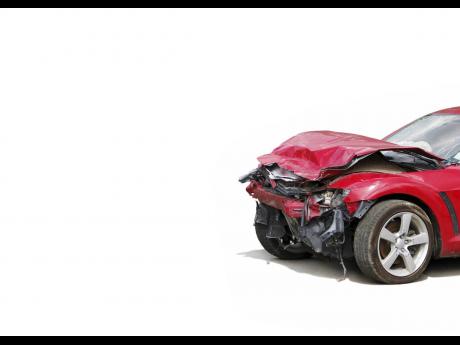How to steer away from a brake failure
Whenever a brake fails, that is the start of big trouble. Without brakes, one’s life and the life of other motorists and road users are at risk. When a driver steps on the brake, he expects the motor vehicle to obediently reduce speed or come to a halt. The famous French Philosopher and mathematician, Blaise Pascal, formulated the principle that a change of pressure at one point of a confined fluid is communicated undiminished to all parts of the fluid. That’s the way a braking system operates. Sometime ago, on Mona road, St. Andrew, a tractor,whose brakes allegedly failed, created much pain, suffering, and depression for one family.
“Motor cars have a two-part braking system” said Derrick Gentles, an experienced St Andrew-based auto mechanic. “One for the rear wheels and one for the front wheels” he added.
According to Gentles, if one part fails, the other part still brakes the wheels. If both parts fail at the same time, one will have no braking power.
He explained that the seriousness of brake failure depends greatly on where it occurs. Should a driver unfortunately lose his braking power on a steep hill, he is in serious trouble.
In this case, try to stop the car as quickly as possible rather than attempting to drive one’s way out of the problem. The longer a driver permits the car to move, the more the momentum increases and the harder it will be to stop.
The first indication of brake failure is a limp pedal that goes to the floor.
Action: Try pumping the pedal vigorously to see if some stopping action can be activated. If you are not going too fast, drop into a lower gear. Be careful that speed is not excessive when one tries to down-shift. Gentles further explained that by dropping into a lower gear at high speeds, the driver runs the risk of blowing the clutch or even the engine through over-revving.
Action: Do not hesitate to use roadside barriers for stopping should your brakes fail. By swiping the side of the car along guardrails, fences, and so on, one can reduce speed or stop the car radically. Forget about the side of the car being damaged. Doors and fenders are inexpensive compared to your personal safety.
Action: If one loses brakes in heavy traffic, one should be able to down-shift and come to a halt with the parking brake. Should this be impossible, hit the car ahead rather than risk a deadly head on collision by trying to overtake. The relative speed of one’s motor car and the vehicle in front will be close. his bumper will cushion you to stop without serious damage.
When total brake failure occurs, the driver is usually braking hard for a stop.
If brake failure, unfortunately occurs, be calm and follow these wise steps and pointers.
WISE STEP 1
Pump the brake pedal fast and hard. “Pumping may temporarily restore enough brake fluid pressure to slow or stop the car. One will know in three or four pumps if the brakes are going to hold.
WISE STEP 2
At the same time, apply the parking brake. While applying this brake, hold parking brake release lever or press the off button. This will allow the driver to quickly release the parking brake for a moment if the car begins to skid. The parking brake, which is a separate braking system, brakes the two rear wheels.
WISE STEP 3
Down-shift to the lowest gear. This action will help to slow the car by using the braking power of the engine.
WISE STEP 4
Be aware of the traffic situation. The driver can still steer and swerve. If necessary, rub the wheels against the left curb or steer into the bushes or something soft to reduce speed.
WISE STEP 5
When one no longer needs to change direction, simply turn off the engine.
A wise word:
In the case of a car equipped with power brake, common brake ‘failure’ is usually the loss of power that helps the vehicle to stop. The power stops if the engine quits running. Interestingly, the brakes have not failed, but without the engine’s power, one must brake harder. Motorists should be reminded that in the case of other brake failures, when brakes overheat, they may lose some of their effectiveness. This is known as “brake fade”. It occurs after a long, continuous, hard braking. Therefore, to regain full braking force, the driver should stop and allow the brakes to cool.


